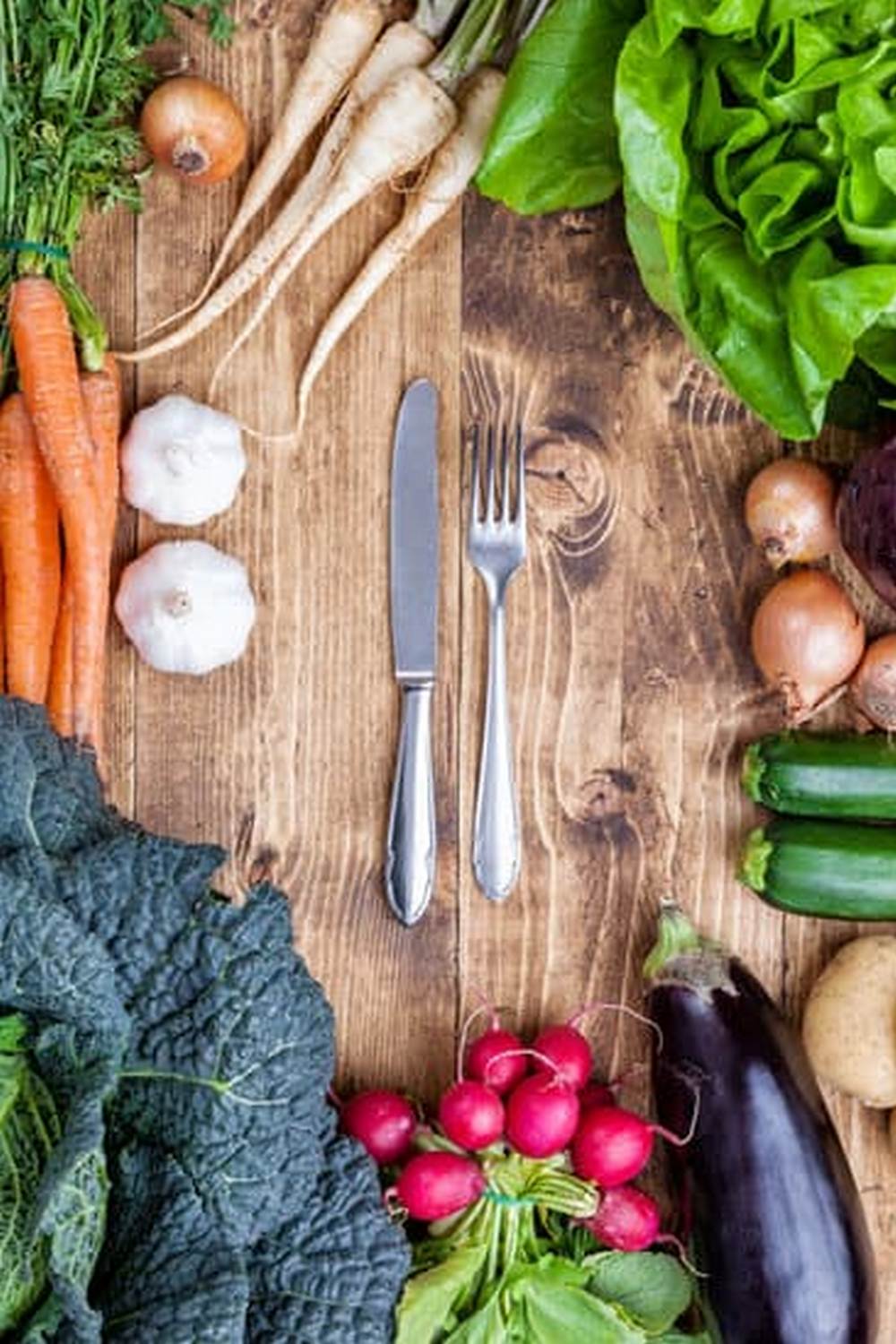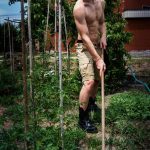Vegetable gardening in containers has become increasingly popular for individuals with limited garden space or those looking to add more greenery to their surroundings. Container gardening offers a practical and convenient way to grow vegetables, herbs, and fruits, making it accessible to anyone, regardless of the size of their outdoor area. This section will explore the numerous benefits of vegetable gardening in containers, from flexibility and portability to the ability to control soil conditions.
When it comes to container gardening for vegetables, choosing the right containers is essential to ensure the success of your garden. Factors such as size, material, and drainage all play a crucial role in determining how well your plants will thrive. Additionally, selecting an ideal location for your container garden can significantly impact its growth and overall productivity. With proper soil and fertilizer management best practice tips have been provided by seasoned gardeners regarding this matter.
Whether you’re a novice or experienced gardener, understanding the ins and outs of container gardening can help you make the most out of this growing method. From water management to pest control options we explore here how easy a healthy vegetable garden brought through containers can be achieved with minor turnparey work than traditional farming techniques.
Choosing the Right Containers
When it comes to choosing the right containers for vegetable gardening, there are a few key factors to consider. One of the most important aspects is the size of the container. Different vegetables require different amounts of space for their roots to grow, so it’s crucial to select containers that are large enough to accommodate the specific vegetables you plan to grow.
Additionally, consider the material of the containers. While clay and ceramic pots are popular choices, they can be heavy and may not provide adequate insulation for the roots. On the other hand, plastic or resin containers are lightweight and hold moisture well, but may not be as aesthetically pleasing.
In addition to size and material, proper drainage is essential for successful vegetable gardening in containers. Without adequate drainage, plants can become waterlogged and susceptible to root rot. When selecting containers, look for ones with holes in the bottom or be prepared to drill your own if necessary. It’s also a good idea to elevate your containers slightly off the ground using bricks or pot feet to ensure proper airflow and prevent water from accumulating underneath.
Ultimately, choosing the right containers for vegetable gardening requires careful consideration of size, material, and drainage. By taking these factors into account when selecting your containers, you can create an optimal environment for your vegetables to thrive and produce bountiful harvests despite limited space.
Selecting the Ideal Location for Your Container Garden
When it comes to vegetable gardening in containers, the location of your container garden is crucial for the success of your plants. The right location will ensure that your vegetables receive the necessary sunlight and protection from harsh elements. Here are some tips for selecting the ideal location for your container garden.
Sunlight Requirements
Before choosing a location for your container garden, it’s important to consider the sunlight requirements of the vegetables you plan to grow. Most vegetables require at least 6-8 hours of direct sunlight per day. Look for a spot on your patio, balcony, or yard that receives adequate sunlight throughout the day.
Protection From Wind and Pests
In addition to sunlight, you’ll also want to choose a location that provides some protection from strong winds and pests. Placing your containers near a windbreak such as a fence or wall can help shield your plants from strong gusts. Additionally, consider placing your containers in an area where pests are less likely to be a problem.
Accessibility and Convenience
Finally, consider the accessibility and convenience of the location for your container garden. Choose a spot that is easy to access for watering, harvesting, and general maintenance. If you live in a climate with extreme temperatures, consider how you can easily move your containers to protect them during heatwaves or cold snaps.
By carefully selecting the ideal location for your container garden, you’ll set yourself up for a successful and bountiful harvest of fresh vegetables. With the right amount of sunlight, protection from wind and pests, and accessibility, you can enjoy the benefits of growing your own vegetables in containers right at home.
Soil and Fertilizer
When it comes to growing vegetables in containers, the type of soil and fertilizer you use can make a huge difference in the success of your garden. Here are some essential tips for ensuring that your container vegetable garden thrives with the right soil and fertilizer:
- Choose a high-quality potting mix: Opt for a well-draining potting mix that is specifically formulated for container gardening. This will provide the necessary nutrients and aeration for healthy plant growth.
- Consider adding compost: Incorporating compost into your potting mix can further enrich the soil with organic matter and beneficial microorganisms, promoting strong root development and overall plant health.
- Use slow-release fertilizer: To provide long-lasting nutrition for your vegetable plants, consider using a slow-release fertilizer specially designed for container gardening. This will help ensure that your plants receive a steady supply of nutrients as they grow.
In addition to choosing the right soil and fertilizer, it’s important to regularly monitor the nutrient levels in your container garden. Since containers have limited space and may not have access to natural sources of nutrients, it’s crucial to feed your plants appropriately. Be sure to follow the recommendations on product labels and adjust as needed based on the specific needs of the vegetables you are growing.
Maintaining proper soil moisture levels is also key to successful vegetable gardening in containers. Watering frequency will depend on factors such as climate, plant size, and container material. Consistently check the moisture level of the soil by inserting your finger into the top inch – if it feels dry, it’s time to water. With proper attention to soil quality and fertilization, you can set your container vegetable garden up for abundant growth and bountiful harvests.
Best Vegetables for Container Gardening
When it comes to vegetable gardening in containers, it’s important to choose the right vegetables that will thrive in a small space. Not all vegetables are suitable for container gardening, so selecting the best ones is crucial for a successful harvest. Here are some top picks for small spaces:
- Tomatoes: Tomatoes are one of the most popular vegetables for container gardening. There are many compact varieties available that do well in containers, such as cherry tomatoes and patio tomatoes.
- Peppers: Bell peppers, chili peppers, and other sweet or hot pepper varieties can also be grown in containers. They don’t require a lot of space and can produce a good yield when properly cared for.
- Lettuce: Leafy greens like lettuce, spinach, and kale are perfect for container gardening. They have shallow root systems and can be easily grown in pots or planter boxes.
These vegetables are not only suitable for container gardening but also provide a bountiful harvest. With proper care and maintenance, you can enjoy fresh produce from your own container garden right on your balcony or patio.
In addition to these top picks, other vegetables that do well in containers include carrots, radishes, beans, and herbs like basil and parsley. When choosing vegetables for your container garden, consider the amount of sunlight your outdoor space receives and the specific growing requirements of each plant. By selecting the right vegetables and providing them with proper care, you can create a thriving container garden even in limited space.
Watering and Maintenance
When it comes to keeping your vegetable garden thriving in containers, proper watering and maintenance are essential. Container gardening requires more frequent watering than traditional ground gardening due to the limited soil volume. It’s important to check the moisture level of the soil regularly and water as needed. The type of container you choose can also impact how often you need to water your vegetables, with larger containers typically requiring less frequent watering compared to smaller ones.
In addition to regular watering, maintenance tasks such as pruning, staking, and fertilizing are crucial for the health and success of your container vegetable garden. Pruning helps control the size of your plants and encourages healthy growth, while staking provides support for vining or tall vegetable varieties. As for fertilizing, it’s important to provide your container garden with the nutrients it needs since growing vegetables can deplete the soil of essential minerals over time.
Aside from these tasks, keeping an eye out for pests and diseases is another aspect of maintenance that cannot be overlooked. Regularly inspecting your plants for any signs of infestations or illnesses allows for early intervention and prevention of potential damage. Applying organic pest control methods and practicing good sanitation habits can help protect your container garden from common threats.
Proper watering and maintenance are key components in successfully nurturing a thriving container vegetable garden. By staying on top of these tasks, you’ll be able to enjoy a bountiful harvest of fresh produce from your containers throughout the growing season.
| Aspect | Importance |
|---|---|
| Watering | Regular watering is essential due to limited soil volume in containers |
| Maintenance Tasks | Pruning, staking, fertilizing are crucial for healthy growth and support |
| Pest & Disease Management | Regular inspection & organic control methods are vital for protecting the garden |
Pest and Disease Management
When it comes to growing vegetables in containers, one of the key challenges that gardeners face is managing pests and diseases. However, with the right knowledge and proactive measures, you can protect your container garden and ensure a bountiful harvest of healthy produce.
Identification and Prevention
The first step in pest and disease management is being able to identify common issues that affect container vegetable gardening. Keep an eye out for signs of aphids, caterpillars, snails, and other pests that can wreak havoc on your plants. Additionally, be vigilant for symptoms of fungal diseases such as powdery mildew or blight. To prevent these problems, choose disease-resistant plant varieties when possible and inspect your plants regularly for any signs of trouble.
Natural Remedies and Integrated Pest Management
Using chemical pesticides should be a last resort when dealing with pests and diseases in your container garden. Instead, consider natural remedies such as insecticidal soaps or neem oil to control pests without harming beneficial insects.
Integrated pest management (IPM) techniques, such as introducing predator insects like ladybugs or lacewings, can also help keep pest populations in check. It’s important to take a holistic approach to pest and disease management that focuses on prevention rather than reliance on chemical solutions.
Cultural Practices
In addition to using natural remedies and IPM techniques, implementing good cultural practices can go a long way in protecting your container vegetable garden from pests and diseases. Proper watering practices that avoid wetting the foliage can help prevent fungal diseases, while maintaining good air circulation around your plants can discourage pest infestations. By keeping your container garden clean and well-tended, you can create an environment that is less hospitable to potential threats.
By being proactive in identifying potential issues, employing natural remedies and IPM techniques, and implementing good cultural practices, you can effectively protect your container vegetable garden from pest and disease problems. With these strategies in place, you’ll be well on your way to enjoying a thriving and productive container garden full of healthy vegetables.
Creative Container Gardening Ideas
When it comes to container vegetable gardening, the possibilities are endless. From repurposing everyday items to implementing innovative gardening techniques, there are several creative ideas for growing vegetables in containers. One unique idea is to use old tires as planters by stacking them and filling them with soil. Not only is this a budget-friendly option, but it also allows for a significant amount of space to grow various types of vegetables.
Another innovative way to grow vegetables in containers is by using vertical gardens. This method maximizes space by allowing you to grow plants upwards on a wall or trellis. Vertical gardens are not only practical for small spaces, but they also create an aesthetic and eye-catching display. Additionally, utilizing hanging baskets or upside-down planters can add an element of creativity to your container garden while saving floor space.
For those looking for a more unconventional approach, consider using mason jars or other glass containers as mini greenhouses for individual plants. These transparent containers can provide the perfect environment for seeds to germinate and young seedlings to thrive. Not only is this an effective method for starting your vegetable garden indoors, but it also offers a charming and whimsical look to your gardening space.
Overall, these creative container gardening ideas offer unique and innovative ways to cultivate a successful vegetable garden in limited spaces. Whether using unconventional materials or implementing vertical gardening techniques, there are numerous options available for those looking to think outside the box when it comes to growing vegetables in containers.
| Creative Container Gardening Ideas | Description |
|---|---|
| Repurposing Tires as Planters | This budget-friendly option allows for ample space to grow various types of vegetables. |
| Vertical Gardens | This method maximizes space by allowing plants to grow upwards on a wall or trellis. |
| Mason Jars as Mini Greenhouses | Using glass containers provides an ideal environment for germinating seeds and nurturing young seedlings. |
Conclusion
In conclusion, vegetable gardening in containers offers a wide range of benefits that make it an attractive option for individuals with limited space or mobility. By carefully selecting the right containers, choosing the best location, and providing proper soil, fertilizer, and maintenance, you can create a thriving container garden that allows you to enjoy the satisfaction of harvesting your own fresh produce.
The versatility of containers for vegetable gardening also allows you to get creative with your gardening efforts. From using unconventional containers like old tires or pallets to utilizing vertical space with hanging planters, there are numerous innovative ways to grow vegetables in containers. This not only adds a unique touch to your garden but also maximizes your available space for growing a variety of vegetables.
Ultimately, the joy of container vegetable gardening comes not just from the process of nurturing and caring for your plants, but also from reaping the rewards of a bountiful harvest. Whether you’re savoring the taste of homegrown tomatoes or enjoying the convenience of having fresh herbs at your fingertips, container gardening provides a sense of accomplishment and satisfaction that is truly unmatched.
So if you’re looking to embark on a rewarding and fulfilling gardening experience, consider starting your own container vegetable garden today.
Frequently Asked Questions
What Containers Are Best to Grow Vegetables In?
The best containers to grow vegetables in are ones that have good drainage, adequate size for plant growth, and are made of non-toxic materials. Options include plastic pots, wooden crates, or fabric grow bags.
What Kind of Pots Are Best for Growing Vegetables?
When it comes to pots for growing vegetables, options like terracotta or ceramic pots are popular choices due to their ability to retain moisture and provide insulation to the roots. Ensure the pots have drainage holes and are large enough for the specific vegetable’s root system.
How Deep Do Containers Need to Be to Grow Vegetables?
The depth of containers needed to grow vegetables varies depending on the specific vegetable being grown. Generally, larger root vegetables like carrots or potatoes will need deeper containers (at least 12 inches), while herbs and some leafy greens can thrive in shallower containers (6-8 inches). It’s important to research each vegetable’s specific depth requirement before planting.

If you’re looking to get into vegetable gardening, or are just looking for some tips on how to make your current garden better, then you’ve come to the right place! My name is Ethel and I have been gardening for years. In this blog, I’m going to share with you some of my best tips on how to create a successful vegetable garden.





